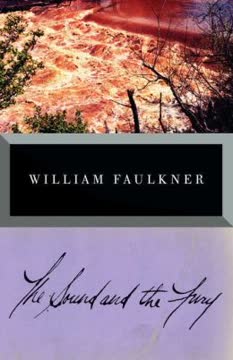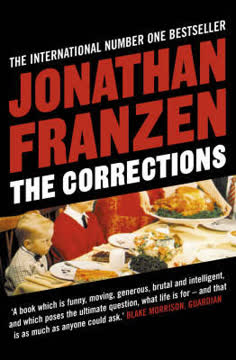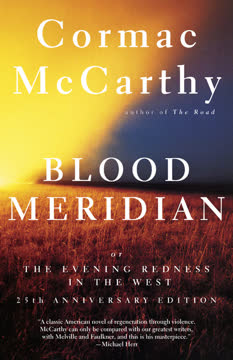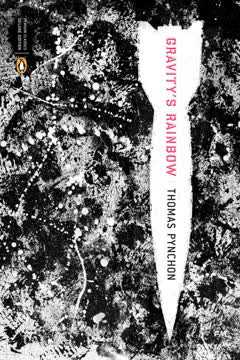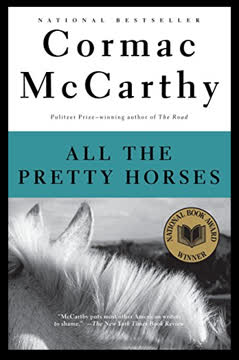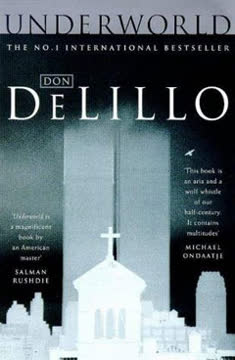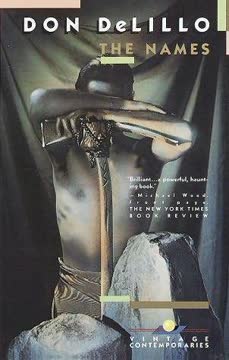Plot Summary
The Arrival of Station Wagons
Each September, the College-on-the-Hill welcomes a parade of station wagons, marking the start of a new academic year. Jack Gladney, the narrator and a professor who founded Hitler studies, observes this ritual with a mix of amusement and detachment. The students, full of youthful exuberance, unload their belongings, while their parents linger nearby, sun-dazed and reflective. Jack lives with his wife Babette and their children from previous marriages in a house near the college. The family is a blend of personalities and histories, each member contributing to the household's unique dynamic.
Family Dynamics and Domestic Life
Babette, Jack's wife, is a nurturing presence in the household, balancing her time between family duties and volunteer work. Her disheveled appearance belies a deep commitment to her family and community. Jack reflects on his previous marriages and the differences between Babette and his former wives. The family engages in everyday activities, from discussing school supplies to sharing meals, each interaction revealing the complexities of their relationships. Jack's children, particularly Denise, challenge Babette's habits, highlighting the generational and personal tensions within the family.
Academic Life and Hitler Studies
At the College-on-the-Hill, Jack is a respected figure, known for his creation of Hitler studies. He wears academic robes, adding a sense of drama to his presence on campus. The college is a hub of intellectual activity, with departments dedicated to popular culture and other fields. Murray Jay Siskind, a new arrival and former sportswriter, becomes Jack's friend and confidant. Murray is fascinated by the cultural phenomena around him, including the most photographed barn in America, which he visits with Jack. Their discussions reveal deeper themes of perception and reality.
The Most Photographed Barn
Jack and Murray visit the most photographed barn in America, a tourist attraction that symbolizes the power of collective perception. Murray observes that no one truly sees the barn; instead, they see the idea of the barn perpetuated by countless photographs. This experience becomes a metaphor for the novel's exploration of media, reality, and the ways in which people construct meaning. The barn represents the layers of cultural and personal interpretation that obscure direct experience, a theme that resonates throughout the narrative.
Supermarket Symbolism and Consumerism
The supermarket becomes a central setting for exploring themes of consumerism and identity. Jack and Babette encounter Murray in the aisles, where he muses on the spiritual and symbolic aspects of shopping. The supermarket is depicted as a place of ritual and mystery, filled with products that promise fulfillment and security. Jack's interactions with his family in this setting reveal the tensions between material desires and deeper existential concerns. The supermarket's bright lights and endless choices serve as a backdrop for the characters' reflections on life and death.
The Airborne Toxic Event
A train accident releases a toxic cloud, forcing Jack and his family to evacuate their home. The event, referred to as the "airborne toxic event", becomes a catalyst for exploring themes of fear, mortality, and the fragility of modern life. As the family navigates the chaos of evacuation, Jack confronts his own mortality, learning that he has been exposed to the deadly chemical. The event underscores the novel's exploration of the pervasive influence of technology and media, as well as the characters' attempts to find meaning in a world filled with uncertainty.
The Media's Indifference to Disaster
In the aftermath of the airborne toxic event, the community grapples with the media's lack of coverage. A man, holding a TV, laments the absence of substantial news about their ordeal. The townspeople feel abandoned, their fear and suffering ignored. They are quarantined, like lepers, with no media frenzy to validate their terror. The speaker's frustration highlights the novel's theme of media's role in shaping reality and the characters' struggle to find meaning in their fear.
Supermarket Chaos and Snow Panic
The supermarket becomes a microcosm of societal anxiety as elderly shoppers, fearing an impending snowstorm, frantically stock up on supplies. The aisles are filled with confusion and urgency, reflecting the characters' existential dread. Jack encounters Murray, who shares news of a colleague's death, further emphasizing the novel's exploration of mortality. The supermarket's chaos mirrors the characters' internal turmoil, as they navigate a world filled with uncertainty and fear.
The Enigma of Dylar Unveiled
Jack finds Babette's hidden bottle of Dylar, a mysterious drug meant to alleviate the fear of death. Denise, Babette's daughter, is aware of the drug but keeps it secret. Jack's confrontation with Babette reveals her deep-seated fear of death, a fear that Dylar was supposed to cure. The drug's failure underscores the novel's theme of the futility of seeking control over mortality. Jack's discovery of Dylar and Babette's confession deepen the novel's exploration of fear and the human condition.
The Illusion of Control and Death
Jack's visit to a medical facility reveals traces of a toxic substance in his blood, confirming his exposure to the airborne toxic event. The diagnosis of a "nebulous mass" in his body forces Jack to confront his mortality. His interactions with the medical staff highlight the novel's critique of technology and its limitations in providing true security. Jack's struggle with his diagnosis reflects the novel's exploration of the illusion of control and the inevitability of death.
The Supernatural and the Everyday
The town is abuzz with UFO sightings, adding a layer of supernatural intrigue to the characters' lives. Jack and his family discuss the sightings, which serve as a metaphor for the unknown and the characters' existential dread. The novel juxtaposes the mundane with the extraordinary, highlighting the characters' search for meaning in a world filled with uncertainty. The UFOs symbolize the novel's exploration of perception and reality, as the characters grapple with their fears and desires.
The Sunset's Uncertain Beauty
The novel concludes with the townspeople gathering to watch the sunsets, which have become more vivid since the toxic event. The sunsets symbolize the novel's exploration of beauty and dread, as the characters are unsure whether to feel awe or fear. The communal experience of watching the sunsets reflects the novel's themes of connection and isolation, as the characters seek solace in shared moments amidst their existential uncertainty.
Characters
Jack Gladney
Jack is the protagonist, a professor grappling with his fear of death. His discovery of Babette's use of Dylar and his own diagnosis force him to confront his mortality. Jack's introspection and existential dread drive the novel's exploration of fear and the human condition. His relationships with his family and friends reveal his vulnerabilities and desires for control and meaning.
Babette Gladney
Babette is Jack's wife, whose fear of death leads her to secretly take Dylar. Her confession to Jack reveals her deep-seated anxieties and the novel's theme of the futility of seeking control over mortality. Babette's character embodies the novel's exploration of love, fear, and the search for meaning in a world filled with uncertainty.
Heinrich Gladney
Heinrich is Jack's son from a previous marriage, a teenager with a keen interest in science and the world around him. He is often at odds with his father, challenging Jack's assumptions and authority. Heinrich's fascination with the airborne toxic event and his role as an informant during the evacuation reveal his complex relationship with knowledge and fear.
Murray Jay Siskind
Murray is Jack's friend and confidant, a cultural observer fascinated by American life. His philosophical discussions with Jack provide a counterpoint to Jack's existential fears, highlighting the novel's exploration of perception, reality, and death. Murray's character serves as a catalyst for Jack's introspection and the novel's thematic concerns.
Denise Gladney
Denise is Babette's daughter, who uncovers her mother's secret use of Dylar. Her curiosity and intelligence make her a formidable presence in the family, reflecting the novel's themes of truth, perception, and the complexities of family dynamics. Denise's character highlights the generational tensions and the search for meaning in the novel.
Steffie Gladney
Steffie is another of Babette's children, known for her vivid imagination and emotional sensitivity. Her experiences during the airborne toxic event, including a moment of déjà vu, highlight her openness to suggestion and the novel's exploration of fear and perception. Steffie's character adds depth to the family's interactions and the novel's thematic concerns.
Wilder Gladney
Wilder is Babette's youngest child, a toddler whose presence in the novel is marked by moments of innocence and mystery. His prolonged crying during the airborne toxic event becomes a focal point for the family's anxieties and fears. Wilder's character embodies the novel's exploration of innocence, vulnerability, and the impact of external events on family life.
Willie Mink
Willie Mink, also known as Mr. Gray, is the project manager behind Dylar. His downfall and subsequent madness underscore the novel's critique of technology and the illusion of control. Mink's interactions with Jack reveal the novel's exploration of fear, mortality, and the human condition.
Plot Devices
The Airborne Toxic Event
The airborne toxic event is a central plot device that disrupts the characters' lives and forces them to confront their fears and mortality. The event serves as a metaphor for the pervasive influence of technology and media, highlighting the novel's themes of fear, uncertainty, and the search for meaning in a modern world. It also provides a backdrop for the characters' personal and philosophical reflections.
Dylar
Dylar is a central plot device, a drug meant to alleviate the fear of death. Its failure highlights the novel's themes of the futility of seeking control over mortality and the limitations of technology. Dylar's role in the narrative underscores the characters' existential dread and the novel's exploration of fear and the human condition.
Supermarket Symbolism
The supermarket is a recurring setting that symbolizes the novel's exploration of consumer culture and its impact on identity and meaning. The characters' interactions in this space reveal their desires, fears, and the ways in which they construct meaning through material possessions. The supermarket's bright lights and endless choices serve as a metaphor for the complexities of modern life and the search for fulfillment.
Media and Perception
The novel critiques the media's role in shaping reality and the characters' understanding of their world. The media's indifference to the airborne toxic event highlights the novel's exploration of perception, reality, and the search for meaning in a world filled with uncertainty. The characters' engagement with media reflects their attempts to navigate their fears and desires.
Analysis
"White Noise" by Don DeLillo is a profound exploration of the anxieties and uncertainties of modern life. Through its characters and plot devices, the novel delves into themes of fear, mortality, and the pervasive influence of technology and media. The airborne toxic event serves as a catalyst for existential reflection, forcing characters to confront their mortality and the illusion of control. The supermarket and Dylar symbolize the complexities of consumer culture and the futility of seeking security through material possessions and technology. DeLillo's critique of media highlights the struggle to find meaning in a world where perception is shaped by external forces. Ultimately, "White Noise" is a meditation on the human condition, exploring the search for connection and meaning amidst the chaos and uncertainty of contemporary life.
Last updated:
FAQ
Synopsis & Basic Details
What is White Noise about?
- Postmodern Family Life: White Noise centers on Jack Gladney, a professor of Hitler Studies, and his blended family in a seemingly idyllic college town. The narrative explores their mundane domestic routines, intellectual pursuits, and anxieties about modern life, consumerism, and death.
- Confronting Mortality: The plot escalates with the "Airborne Toxic Event", a chemical spill that forces the family to evacuate and exposes Jack to a potentially fatal substance. This crisis, alongside his wife Babette's secret use of a drug called Dylar to combat her fear of death, forces Jack to confront his own mortality and the pervasive dread of the unknown.
- Media, Consumerism, and Reality: The novel delves into how media saturation, consumer culture, and technology shape perception and reality, often blurring the lines between genuine experience and simulated events. It's a satirical yet profound look at the human attempt to find meaning and control in an increasingly chaotic and information-dense world.
Why should I read White Noise?
- Sharp Social Commentary: Don DeLillo offers a biting and often humorous critique of American consumerism, media obsession, and the anxieties of modern existence, making it highly relevant even decades after its publication. The novel's insights into our relationship with technology and information are particularly prescient.
- Unique Narrative Voice: Jack Gladney's introspective, often ironic, and deeply human narration provides a compelling lens through which to explore profound philosophical questions about life, death, and meaning. His internal monologues are both intellectually stimulating and emotionally resonant.
- Literary Craftsmanship: DeLillo's prose is renowned for its precision, rhythm, and evocative imagery, creating a distinctive reading experience. The novel's blend of satire, intellectual discourse, and moments of genuine tenderness makes it a rich and rewarding literary work.
What is the background of White Noise?
- Postmodern American Context: Published in 1985, White Noise is a quintessential postmodern novel, reflecting the anxieties of the late Cold War era, the rise of mass media (especially television), and burgeoning consumer culture. The "Airborne Toxic Event" can be seen as a metaphor for environmental fears and the pervasive, invisible threats of modern industrial society.
- Academic Satire: The setting at the College-on-the-Hill, with its Department of Hitler Studies and Popular Culture, satirizes academic trends and the commodification of knowledge. Jack's invention of Hitler Studies highlights the postmodern tendency to analyze and package historical trauma.
- Technological Influence: The novel explores the increasing saturation of technology in daily life, from television's omnipresence to the fear of chemical spills and the promise of pharmaceutical solutions (Dylar). It captures a moment when society was grappling with the implications of a rapidly advancing, yet often opaque, technological landscape.
What are the most memorable quotes in White Noise?
- "All plots tend to move deathward.": Jack Gladney's spontaneous pronouncement during a lecture (Chapter 6) encapsulates a central White Noise theme: the inherent trajectory of narratives and human endeavors towards mortality, suggesting that even our attempts to create meaning are shadowed by death.
- "The more you kill, the more credit you store up.": Murray Jay Siskind's chilling theory (Chapter 37) on the "killer" versus "dier" dichotomy reveals a dark, primal human impulse to overcome one's own mortality by inflicting death on others, offering a controversial perspective on violence and survival.
- "We are the sum total of our data.": The SIMUVAC technician's statement to Jack (Chapter 21) profoundly articulates the novel's concern with identity in the digital age, where personal history and even mortality are reduced to quantifiable information, highlighting the dehumanizing aspect of modern systems.
What writing style, narrative choices, and literary techniques does Don DeLillo use?
- Hyper-realistic Dialogue: DeLillo employs a distinctive dialogue style that often sounds naturalistic yet is highly stylized, featuring characters who speak in philosophical pronouncements, lists, and seemingly mundane observations that carry profound subtext. This creates a sense of heightened reality and intellectual play, a hallmark of White Noise's literary techniques.
- Repetition and Litany: The novel frequently uses repetition of phrases, brand names, and lists (e.g., supermarket items, symptoms, types of death) to create a hypnotic, almost incantatory effect. This stylistic choice emphasizes the overwhelming nature of consumer culture and information overload, contributing to the novel's unique narrative choices.
- Ironic Detachment and Satire: DeLillo maintains a tone of ironic detachment, particularly through Jack's narration, which allows for sharp social satire of American life, academia, and media. This literary technique enables the novel to explore serious themes of fear and mortality with a darkly comedic edge, inviting readers to question conventional understandings of reality.
Hidden Details & Subtle Connections
What are some minor details that add significant meaning?
- Wilder's Enigmatic Silence: The youngest child, Wilder, often remains silent or speaks in "half-words," particularly after his prolonged crying spell (Chapter 16). This silence, contrasted with the family's constant chatter and media noise, symbolizes a pre-linguistic, pre-anxiety state of being, suggesting an innocence or a deeper, unmediated connection to reality that the adults have lost.
- The "Most Photographed Barn" as a Precursor: Murray's observation that "no one sees the barn" after seeing the signs (Chapter 3) subtly foreshadows the family's later experience with the "Airborne Toxic Event". The mediated reality of the barn, where the image supplants the object, mirrors how the toxic cloud becomes a media spectacle, its reality filtered through official terminology and news reports, rather than directly experienced.
- The Recurring Smoke Alarm: The smoke alarm going off in Chapter 2, either due to a dead battery or a fire, is a seemingly throwaway detail that encapsulates the family's ambiguous relationship with danger and information. It's a false alarm that hints at real threats, mirroring the constant low-level anxiety and uncertainty that pervades their lives, where signals are often unclear or misinterpreted.
What are some subtle foreshadowing and callbacks?
- Heinrich's Philosophical Debate on Rain: Early in the novel (Chapter 6), Heinrich engages Jack in a philosophical debate about the nature of rain, questioning objective reality and the reliability of senses. This seemingly abstract discussion subtly foreshadows the family's later struggle to comprehend the "Airborne Toxic Event", where official information contradicts sensory experience, and the very definition of "rain" or "cloud" becomes a matter of debate.
- Jack's "Plots Move Deathward" Remark: Jack's spontaneous declaration during his Hitler lecture (Chapter 6) that "All plots tend to move deathward" serves as a profound piece of self-referential foreshadowing. It not only hints at the novel's own narrative trajectory towards confrontation with death but also subtly prefigures Jack's later "plot" to kill Willie Mink, which is explicitly driven by his fear of death.
- The "Waves and Radiation" Motif: Murray introduces the concept of "waves and radiation" in relation to television (Chapter 10), describing it as a "primal force" and "psychic data." This motif is echoed throughout the novel, from the "Airborne Toxic Event" (Chapter 21) being described in terms of "vaporized chemicals" and "energy levels" to the supermarket's "language of waves and radiation" (Chapter 40), subtly linking media, environmental threats, and the pervasive, invisible forces shaping modern life.
What are some unexpected character connections?
- Jack's Ex-Wives and the "Intelligence Community": Jack's casual remarks about his former wives having "ties to the intelligence community" (Chapter 2, 11, 18) initially seem like quirky biographical details. However, they subtly connect to the novel's broader themes of hidden information, surveillance, and the pervasive, often unseen, forces that shape individual lives, hinting at a world where personal relationships are intertwined with larger, opaque systems.
- Babette's Father, Vernon Dickey, and the Gun: Vernon's unexpected arrival and his gift of a handgun to Jack (Chapter 32) create a surprising link between Babette's seemingly wholesome family background and a darker, more primal form of self-reliance and violence. Vernon's "reckless weather" and practical, survivalist mindset influence Jack's later actions, revealing a hidden connection between domesticity and latent aggression.
- Heinrich's Chess Opponent and Willie Mink: Heinrich's long-distance chess game with a convicted killer (Chapter 6, 10) introduces the theme of violence and its motivations early on. This seemingly isolated detail subtly connects to Willie Mink, the Dylar project manager, who is later revealed to be a "controversial fellow" (Chapter 38) involved in unethical human experimentation, linking abstract discussions of crime to concrete, morally ambiguous actions.
Who are the most significant supporting characters?
- Vernon Dickey (Babette's Father): Vernon embodies a raw, unvarnished masculinity and a pragmatic approach to life and death, contrasting sharply with Jack's intellectual anxieties. His gift of the gun and his "reckless weather" (Chapter 32) directly influence Jack's actions and provide a glimpse into the working-class American psyche, highlighting themes of self-reliance and latent violence.
- Winnie Richards (Neurochemist): Winnie, the "brilliant" but reclusive neurochemist (Chapter 25), serves as a scientific counterpoint to Murray's philosophical musings. Her insights into Dylar's mechanism and her "spacey theory" of fear (Chapter 30) provide a scientific, yet still ambiguous, explanation for the characters' existential dread, linking personal psychology to broader biological and environmental forces.
- The SIMUVAC Technician: This unnamed character (Chapter 21) represents the bureaucratic and dehumanizing aspects of modern disaster management. His detached, jargon-filled explanation of Jack's "data profile" and the "simulated evacuation" highlights the novel's critique of systems that prioritize data and rehearsal over genuine human experience and suffering, underscoring the theme of the illusion of control.
Psychological, Emotional, & Relational Analysis
What are some unspoken motivations of the characters?
- Jack's Quest for Authority and "Massive-ness": Beyond his fear of death, Jack is deeply motivated by a desire for academic and personal gravitas, as evidenced by his chancellor's advice to "grow out" into Hitler (Chapter 4) and his adoption of the "J.A.K. Gladney" persona. This unspoken motivation drives his pursuit of German, his academic posturing, and his need to be seen as a formidable figure, a defense against his inner insecurities.
- Babette's Pursuit of "Wholeness and Identity": Babette's secret Dylar use stems not only from a fear of death but also from a deeper, unspoken need for control and a sense of self in a chaotic world. Her attachment to her green visor (Chapter 9), which "seemed to speak to her, to offer wholeness and identity," subtly reveals her struggle to maintain a coherent self amidst the demands of her blended family and her own anxieties.
- Heinrich's Search for Objective Truth: Heinrich's constant questioning, his chess game with a killer, and his fascination with scientific data (Chapter 6, 10, 21) are driven by an unspoken motivation to find objective truth and order in a world he perceives as inherently uncertain and illogical. His intellectual detachment is a coping mechanism, a way to impose structure on overwhelming information and emotion.
What psychological complexities do the characters exhibit?
- Jack's Hypochondria and Death Obsession: Jack exhibits a complex psychological state where his intellectual fascination with Hitler and death studies masks a profound, personal hypochondria and fear of dying. He projects his anxieties onto external events (like the ATE) and seeks validation for his fears, even finding "reward" in Murray's compassion for his "death impression" (Chapter 21).
- Babette's Denial and Self-Deception: Babette's psychological complexity lies in her deep-seated fear of death, which she attempts to suppress and medicate with Dylar, leading to memory lapses and a disconnect from her own actions. Her insistence on "telling each other everything" (Chapter 7) is ironically juxtaposed with her profound secret, revealing a struggle between her desire for intimacy and her need to hide her vulnerability.
- The Children's Precocity and Vulnerability: The Gladney children, particularly Denise and Steffie, display a complex mix of precocious intelligence and underlying vulnerability. Denise's "hard-nosed" pragmatism and her "Physicians' Desk Reference" (Chapter 9) are a defense mechanism against the perceived chaos of adult life, while Steffie's suggestibility to symptoms (Chapter 21) highlights the permeable boundary between external information and internal psychological states in childhood.
What are the major emotional turning points?
- Wilder's Prolonged Crying Spell: Wilder's seven-hour crying jag (Chapter 16) is a significant emotional turning point, as it strips away the family's superficial composure and forces them to confront raw, inarticulate anguish. Jack's eventual "entry" into the crying, finding it "strangely soothing," marks a moment of profound, if unsettling, emotional connection and surrender to primal feeling.
- Babette's Dylar Confession: Babette's tearful revelation of her fear of death and her "indiscretion" with Mr. Gray (Chapter 26) is a pivotal emotional climax. It shatters Jack's idealized image of her as the "happy one" and forces both characters to confront their shared, yet individually experienced, terror of mortality, leading to a moment of raw intimacy and mutual vulnerability.
- Jack's Shooting of Willie Mink: Jack's attempt to kill Willie Mink (Chapter 39) is a violent emotional turning point, driven by his desire to "kill to live" and overcome his own death fear. The subsequent "restoration of the normal order of matter and sensation" and his "soaring humanity" after dragging Mink to the clinic reveal a complex emotional aftermath, where violence and redemption become intertwined.
How do relationship dynamics evolve?
- Jack and Babette's Shared Fear and Intimacy: Initially, Jack and Babette's relationship is characterized by a playful, almost competitive discussion of who will die first. However, Babette's Dylar confession and Jack's own exposure to Nyodene D. transform their dynamic into one of shared, profound fear, leading to deeper intimacy and a mutual, if desperate, reliance on each other for comfort and understanding (Chapter 26).
- Jack and Heinrich's Intellectual Sparring: The father-son dynamic between Jack and Heinrich evolves from simple parental authority to a complex intellectual sparring match. Heinrich's scientific skepticism and his embrace of "uncertainty, randomness and chaos" (Chapter 6) challenge Jack's more traditional worldview, forcing Jack to confront the limitations of his own knowledge and control, particularly during the Airborne Toxic Event.
- The Family as a "Magic Act": The blended Gladney family, initially a collection of disparate individuals, develops a unique, almost telepathic, dynamic, particularly in crisis. Jack observes them as a "magic act" (Chapter 8), sharing "unaccountable things," and later as a unit that "seals off the world" (Chapter 17) with its own "misinformation." This evolution highlights their collective coping mechanisms and the formation of a unique family identity in the face of external threats.
Interpretation & Debate
Which parts of the story remain ambiguous or open-ended?
- The True Nature of the Airborne Toxic Event: While presented as a chemical spill, the "Airborne Toxic Event" (Chapter 21) retains a degree of ambiguity. Its shifting terminology ("feathery plume," "black billowing cloud," "airborne toxic event"), the contradictory symptoms, and the SIMUVAC exercise's "simulation" aspect leave open the question of how much of the event is "real" and how much is a product of media, fear, and bureaucratic control, blurring the lines of White Noise reality.
- The Effectiveness of Dylar: The novel never definitively confirms whether Dylar actually works to alleviate the fear of death. Babette claims it failed, but her memory is compromised, and Willie Mink continues to take it, albeit in a deranged state. This ambiguity leaves the reader to ponder whether the drug is a genuine scientific breakthrough, a placebo, or a dangerous illusion, central to the White Noise themes of control and human vulnerability.
- Wilder's "Miraculous" Recovery and Silence: Wilder's sudden cessation of crying after seven hours (Chapter 16) and his subsequent enigmatic silence remain unexplained. Is it a natural developmental phase, a profound spiritual experience, or a symbolic rejection of the adult world's noise and anxiety? His final act of riding his tricycle across the expressway (Chapter 40) further emphasizes his mysterious connection to a reality beyond adult comprehension, leaving his character's significance open to interpretation in White Noise analysis.
What are some debatable, controversial scenes or moments in White Noise?
- Jack's Hitler Studies Department: The very existence of a "Department of Hitler Studies" (Chapter 1) and Jack's role as its founder is inherently controversial. It raises questions about the commodification of history, the academic obsession with evil, and the potential for intellectual detachment to normalize or even glamorize horrific subjects, sparking debate on the ethics of academic inquiry in White Noise.
- The SIMUVAC Exercise and its "Reality": The "simulated evacuation" (Chapter 27) that uses a real toxic event as a "model" for practice is a highly debatable moment. It blurs the line between simulation and reality, suggesting a bureaucratic indifference to human suffering and a postmodern tendency to turn disaster into a controlled, repeatable event, prompting readers to question the nature of truth and experience in White Noise.
- Murray's "Kill to Live" Theory: Murray's theory that "to kill him is to gain life-credit" (Chapter 37) and that violence is a "form of rebirth" is one of the most controversial philosophical arguments in the novel. It challenges conventional morality and offers a disturbing perspective on the human impulse to overcome death through aggression, inviting intense debate on the dark undercurrents of human nature in White Noise analysis.
White Noise Ending Explained: How It Ends & What It Means
- The Cycle of Consumerism and Media: The novel concludes with the supermarket as a central motif (Chapter 40), where shelves are rearranged, and shoppers, particularly the elderly, navigate confusion. This signifies the endless, disorienting cycle of consumer culture and information overload, suggesting that despite moments of crisis, the fundamental patterns of modern life persist, a key aspect of White Noise themes.
- Ambiguous Hope and Persistent Dread: The final scenes depict the townspeople gathering to watch the "unbearably beautiful" sunsets, a phenomenon linked to the toxic event. This communal ritual embodies the novel's core tension: a blend of awe and dread, beauty and danger. The ending suggests that while fear and uncertainty are pervasive, there's also a human capacity for collective experience and a search for meaning, even if that meaning remains elusive and tinged with dread, a central point in White Noise ending explained.
- The Triumph of "White Noise": The novel ends with the omnipresent "white noise" of media, consumerism, and environmental static, which continues to shape perception and obscure deeper truths. The supermarket's holographic scanners "decode the binary secret of every item, infallibly," representing a system that processes reality beyond human comprehension. This signifies that despite individual struggles, the overwhelming "noise" of modern existence ultimately prevails, leaving characters (and readers) to find their own meaning within its pervasive hum, a crucial element for understanding White Noise meaning.
Review Summary
White Noise is a postmodern masterpiece that explores themes of death, consumerism, and information overload. Readers praise DeLillo's satirical wit, philosophical musings, and prescient observations about modern society. The novel follows Jack Gladney, a professor of Hitler studies, and his family as they navigate a world saturated with media and fear. While some find the dialogue and characters unrealistic, many appreciate the book's dark humor and thought-provoking commentary on American culture. Critics hail it as a landmark work that remains relevant decades after its publication.
Similar Books
Download PDF
Download EPUB
.epub digital book format is ideal for reading ebooks on phones, tablets, and e-readers.

